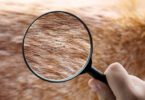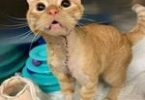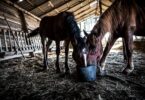Have you recently noticed a shift in the geste of your horse? How does your horse appear drowsy and sluggish after exercise? You probably have reason to be concerned if you are observing exhaustion symptoms. Is it just a brief blip, or do you need to deal with a more serious problem at the beginning?
We will discuss a few of the most prevalent causes of fatigue among nags in this article. On the whole, we should go over certain signs and side effects that point towards an exhausted horse to assist you with feting this better in your own bothers.
Is your horse worn out?
Nags, like humans, have regular ups and downs in their energy situations that are caused by a wide range of environmental and physiological factors. So, during exercise and a break,In order to determine whether If If you think you are, you will need to pay close attention to your mount. seeing is actually a problem.
The nags on Also, your horse might be less receptive to your instructions or to stimulants in their surroundings if they are experiencing significant fatigue.
However, if the pace of your horse has significantly slowed, that could be a sign of exhaustion.
When nags are tired, they occasionally a portion of their collaboration.In any case, you might notice that your horse stumbles more often.Indeed, fatigued nags may encounter difficulties from time to time.
While exercising,It’s possible that your horse is less excited than usual and give up sooner.
Your mount’s acceleration and deceleration may be more delicate.
Running or cantering with more frequent lead changes could indicate fatigue.Nagging people who are tired Move their necks and heads occasionally more than those who are not tired.You might hear your horse sound like it’s struggling to breathe and getting tired faster.
It’s possible that there will be more of them.
Brushing could occur more frequently..
Constantly noticing one or more than one of these signs? It’s time to find out what’s really going on and why your horse is tired.
Then, Some Common Causes of Your Horse’s Fatigue Let’s look at a few of the options causes of nags’ fatigue. The terrain is involved in some of these. Health is one of them. Still, your geste might be seen by others.
1. Regular exercise and training
first and foremost, cause fatigue during exercise and training. It is a routine a component of the procedure, exactly how it is for people.According to the Veterinary Manual from Merck, fatigue is a typical side effect of activity that is performed at a high intensity or over an extended period of time. The body actually uses the muscle’s diminished capacity for force production as a buffer. But if the beast didn’t stop because of fatigue, the violent Muscle cells may suffer structural damage from exercise and probative napkins.
Therefore, fatigue will ultimately affect your horse’s performance during endurance or high-intensity training. There are many ways to exercise your horse, and root exercises can change certain prostration positions.
You shouldn’t force a horse to continue exercising when it is exhausted. However, in order to compensate for the fatigue, the horse may make unnatural adjustments to its gait if it decides to continue. Harm can occur when that occurs. This probably happened to you at some point while working out or doing something you always do.
Most nags will tire after working out for between 30 and 40 seconds at the highest intensity (for the beast in question), according to the point.It could require without a doubt lower investment than that.Dehumidification or electrolyte loss are two factors that are frequently linked to fatigue resulting from endurance training and exercises. We will discuss these issues in a moment.
How can you address it?
Your horse is at moving around,, you will not be able to completely alleviate fatigue.It complements the house.However, you can try to avoid overtraining at least.
You can alleviate some of your horse’s regular drill fatigue and give him correct treatment after training in a variety of ways. Consistent exercise can gradually improve your horse’s endurance, strength, and stamina.It will take longer and harder exercises to wear out your horse as it gets stronger and more athletic.
Before doing exercises, properly get your horse warmed up.
Consider incorporating more fat into your horse’s diet. However, When you do this, ensure that you progress slowly rather than all at once.
Prior to exercise, you can also give your horse less than usual fiber.
Prior to undertaking strenuous physical activity, eat small portions of food.
After exercise, rehydrate your horse using a reliable method. However, if you find that drinking water is insufficient, you can incorporate the use of a saline solution into your hydration plan. You can ask your warhorse which outcome would be optimal for your horse.
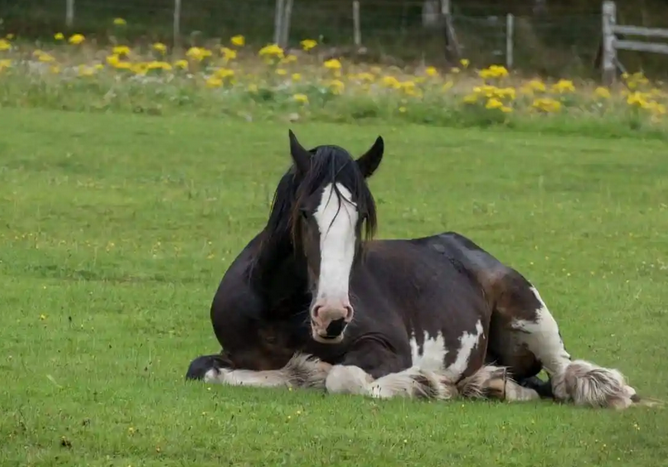
2. Overtraining
In any case, if you’re just practicing your horse an ordinary, solid quantum, some level of weakness will be a typical situation. On the other hand, you might notice that your horse’s fatigue gets worse and lasts longer if you consistently overtrain him. In fact, it could occur frequently.
How might you deal with it?
The stylish solution to fatigue brought on by overtraining your horse is to stop. While you are resolving your pony, be on the lookout for any indications of acute fatigue. Assuming that you notice that your pony is getting drained, lessen how much work you do or enjoy some time off.
Know whether your pony starts to move bizarrely because of activity depletion. You should immediately stop because of this.
3. Electrolyte loss and/or dehumidification Your horse sweats out water and electrolytes when it is exercising or when it is hot outside. The end result will be exhaustion.
How might you deal with it?
Prioritize reducing your preparation schedules particularly scorching days whenever possible.In addition, on days when it is extremely hot, you probably shouldn’t exercise your horse as much. Your horse should always be hydrated prior to exercise, regardless of the amount of rain. Both abidance-related fatigue and dehumidification can be difficult issues that call for immediate intervention. In spite of current practices for assessing recuperation very still stops, the Merck Manual expresses that rivals in three-day occasions or perseverance lifts might display indications of surrender. Problems can sweat out a lot of water and show signs of dehydration, tiredness, high heart and breathing rates as well as levels of internal heat. These nags need a lot of care. People who have A high temperature in the body should get fluids (orally and intravenously) and be hosed constantly with really cold water. They should stand in the shade and, if possible, breathe cool air.
When it says “veritably cold,” the primer means a wave that is close to ice-cold.”Incorporating some additional methods to ensure that your horse consumes sufficient water is the next step. You might also want to read about it to find out if horse sweating is normal or not.
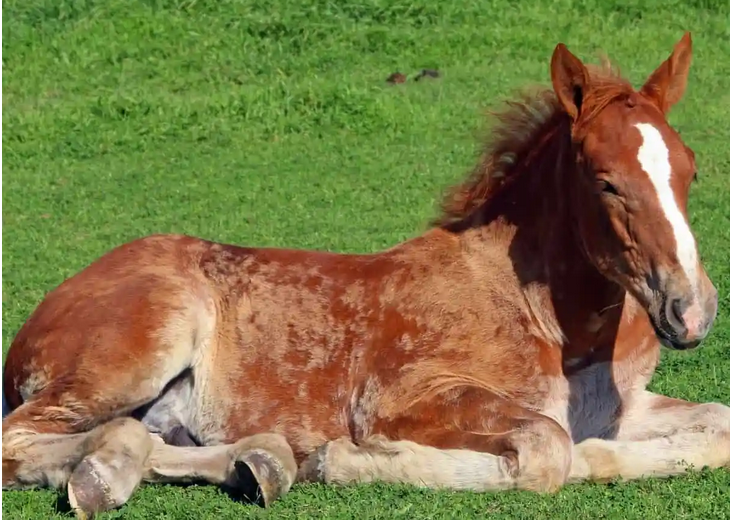
4. Low blood sugar
You probably already know that low blood sugar can make people feel sleepy, but did you know that nags can experience the same thing? One possibility is low blood sugar. why your horse seems so tired a lot.
According to Kentucky Equine Exploration Nutritionist Kathleen Crandell, Ph.D., adult hypoglycemia is primarily caused by the increased utilization of glucose by the body or dropped product, metabolism, glucose storage, and transport throughout the body. The vast maturation of the organs and systems in the body, particularly the brain and spinal cord, is driven by glucose.
Therefore, if there are issues with blood sugar, there may also be issues with the nervous system. One of the outcomes may be fatigue.
How can you address it?
The Merck Manual states, “No system of glycogen lading using adaptations to normal feeding has been described in nags,” despite the fact that it is essential to ensure that your horse has sufficient glycogen prior to engaging in vigorous exercise. There is no scientific support for the use of glucose or other carbs to improve Standardbred and Thoroughbred racehorses’ performance before competing.
If your horse is at the moment consuming processed foods, largely reused, you should still think about replacing them with foods that have been used less often.
In order to avoid high blood sugar imbalances and harpoons, you should You should not feed your horse food. with a high glycemic indicator.
It’s possible that incorporating essential adipose acids into the usual diet for your horse will also help control blood sugar.
You can get customized recommendations by bandying together with your horse’s blood sugar warhorse. If you talk to a warhorse regarding the possibility of either high or low blood sugar, you can also get blood tests to see if the problem exists. You can be certain that you are taking the appropriate treatment measures in this way.
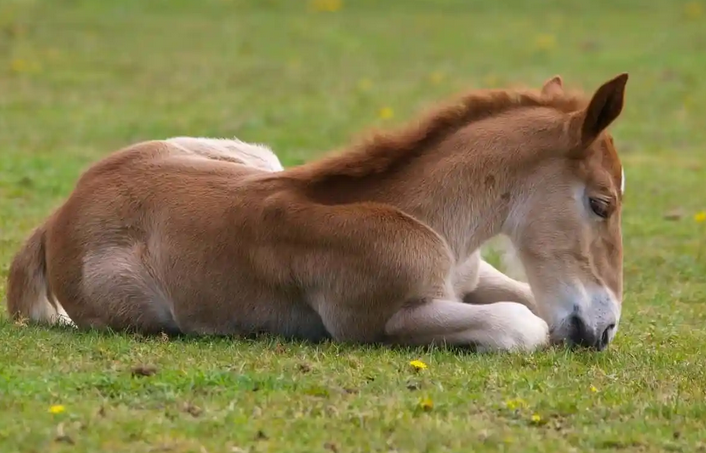
5. Respiratory problems
Fatigue in the core can be brought on by a variety of factors, including pain, hormones in the blood, and situations similar to low blood sugar. Horse and hound bandy a number of different possibilities for central fatigue, and jotting. Breathing problems can also cause central fatigue. Nips with a lower airway problem similar to intermittent airway inhibition (RAO) or an upper airway inhibition similar to roaring could also be more vulnerable.
Therefore, if your horse frequently appears winded, it might be worthwhile to investigate whether any respiratory problems persist.
How can you address it?
Still, if you think your warhorse might have a respiratory problem, a visit is the smartest thing to do. During a test, your warhorse can assist in determining whether obstructions are to blame for your horse’s fatigue.
6. Pain or inflammation
A horse can become exhausted as a result of pain, as Horse and Hound just mentioned. This could be habitual fatigue in response to habitual pain or temporary fatigue in response to temporary pain.
It merits examining whether your horse may be in torment. Is there a possible injury that you aren’t worried about?
There may also be a contributing beginning health condition, depending on the health and age of your horse. For instance, a horse with arthritis would experience intermittent pain and inflammation, which could result in significant fatigue.
How can you address it?
Examine your horse’s symptoms and body language to check to see if there are any patterns that can help you. understand what’s going on. But if you can’t determine it on your own. own, you should talk to a warhorse. This could be an opportunity to get a starting issue in advance and start treatment.
You could also benefit from learning about the signs that your horse might be in pain and which horse injuries to look out for and treat incontinently.

7. Infection
Exhaustion can be welcomed on by different contaminations. Take, for instance, the way you feel when you get the flu or a cold. In addition, your horse does not feel up to anything important when it is infected with a contagion, bacteria, or sponger.
How can you address it?
Still, If you suspect that your warhorse may be infected, you should set up an appointment with him or her. Your horse can be treated and get rid of the infection once you know what it is if it exists. Then there are a lot of additional clues that your horse should look for a warhorse..
8. Cold rainfall
Did you realize that your horse will get too cold, it could give you stomach pain and make you tired? In a moment, we’ll talk more about bellyaches as a whole. It’s important to know that exposure and/or a lack of water can cause your horse to develop bellyache in cold weather.
Why wouldn’t your horse drink enough during downtime? You may not be concerned about the occasional indurate water sources that you supply. Consequently, your horse might drink less.
How can you address it?
Remove your horse from the rudiments so that he can If you experience mild hypothermia (a temperature of less than 99.5 °F, signs of languor, and a disinclination to move); He should get out of the cold wave as soon as possible. A garage can serve as a temporary shelter for possessors who do not have a barn. Warm water cataracts and robes can also be used to speed up the warming process.
Keep an eye on your horse’s water force regularly, and in the event any of it appears to be firming up, dehumidify it with some water that isn’t firm.

9. Bellyache
One of the most prevalent health problems is a stomachache. nags can cause.. The bellyache of a horse is short-term abdominal pain. Stomach pain can be brought on by gas, injuries or obstructions, ulcers, inflammation, infarction, or strangulation. The next section discusses the various horse bellyaches you might be experiencing.
Even though bellyaches can be moderate, severe, or mild, they can be fatal, Therefore, if you believe your horse possesses them, Risks should never be taken.
To help people in perceiving the signs and side effects of bellyache in a timely manner, The Royal British Horse Society developed the acronym REACT.
R) being restless or agitated; E) eating less or reducing feces; A) abdominal pain; C) clinical changes; T) being agitated or sleepy. According to society, “tired or sleepy” refers to lying down more with a lower head position.
Still, if your horse shows signs of discomfort, you should go to the warhorse incontinently. This way, you can deal with the possible bellyache before it affects your horse badly. You can also try some easy ways to prevent stomach pain.

10. Your steed is fat.
Another straightforward explanation for your horse’s fatigue is its weight. What constitutes fat? The following is the appropriate weight for a typical horse. It ought to be simple enough to determine whether or not this is possible. However, You could not have allowed it as a potential cause of fatigue if you had not considered it beforehand.
How can you address it?
Still, if your horse behaves as fat that it makes you tired, that additional weight is most likely causing or will cause additional health issues is now time move in the right direction to control your horse’s weight. This may necessitate altering one’s diet and exercise regimen.

